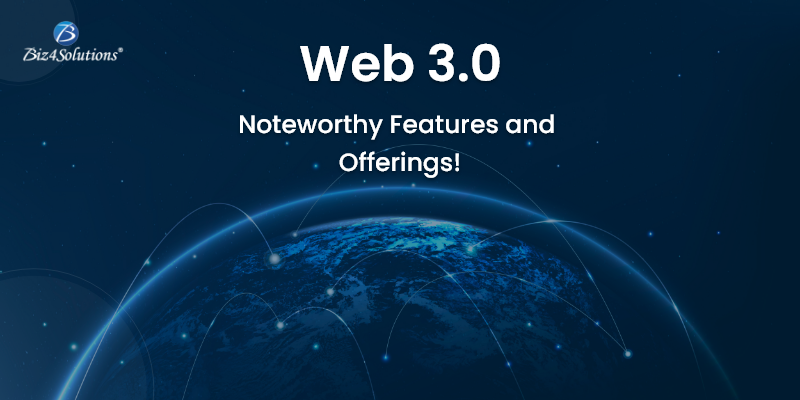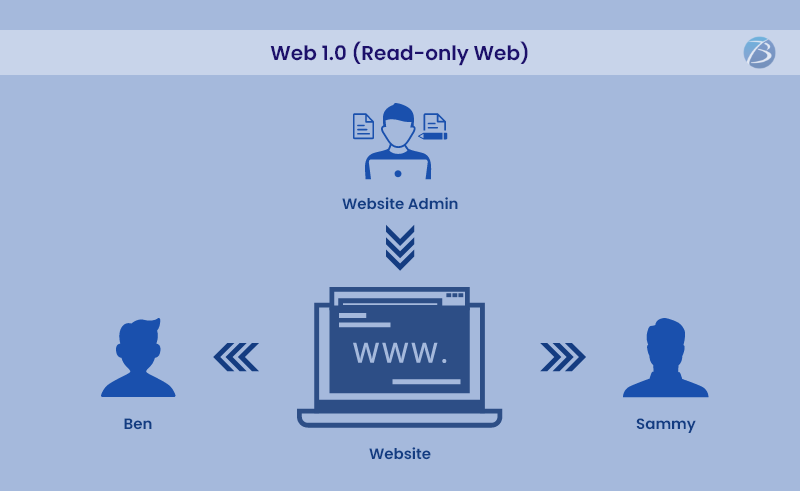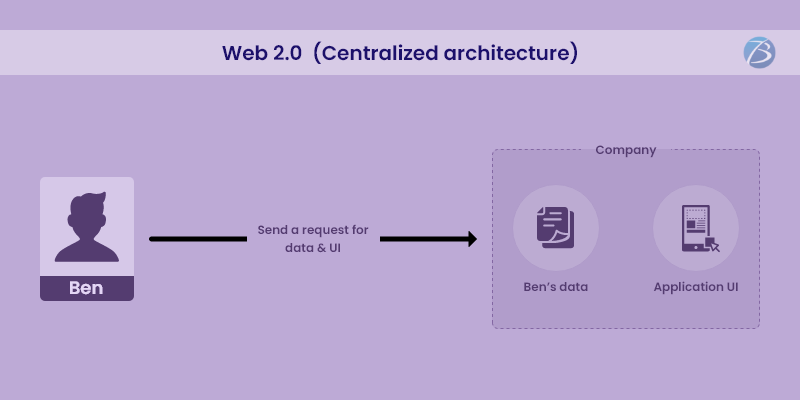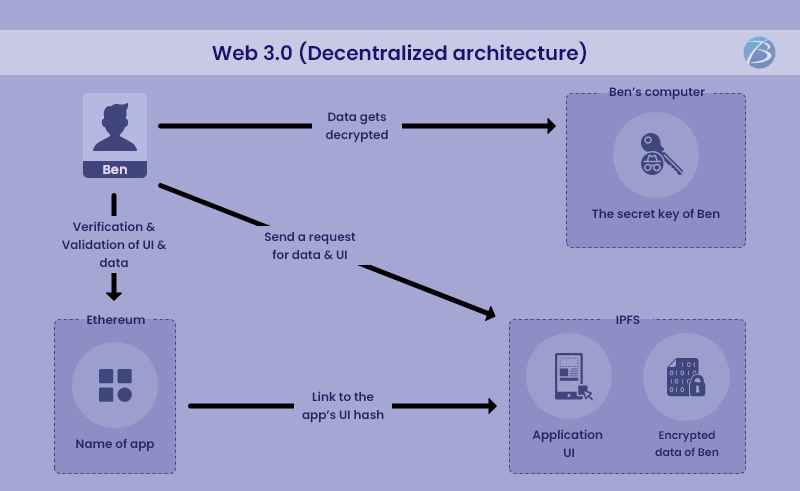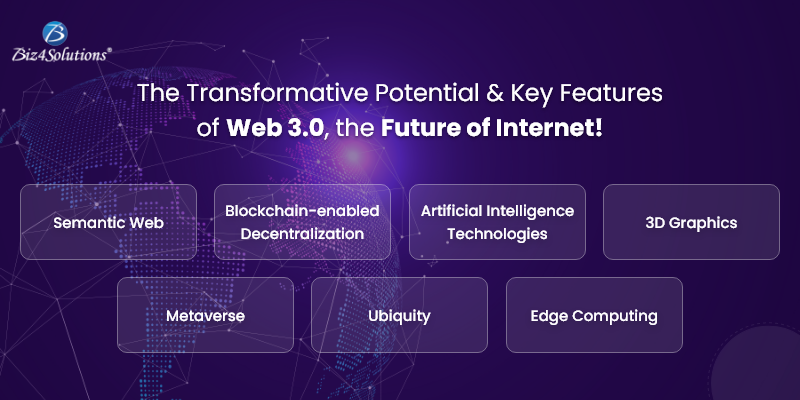How are Disruptive Tools & Technologies shaping the Future of Dentistry?
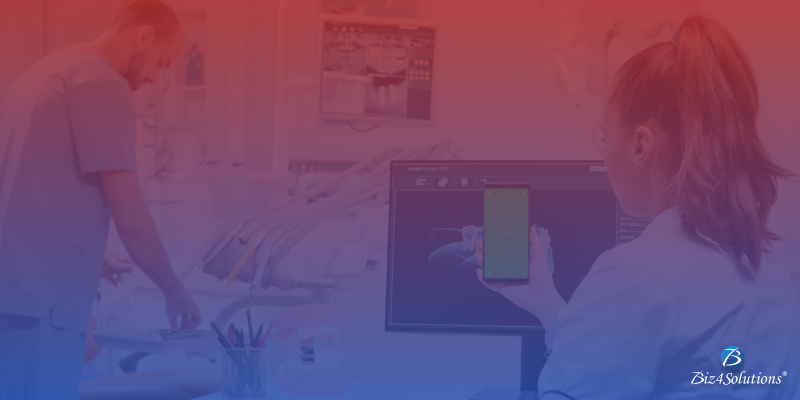
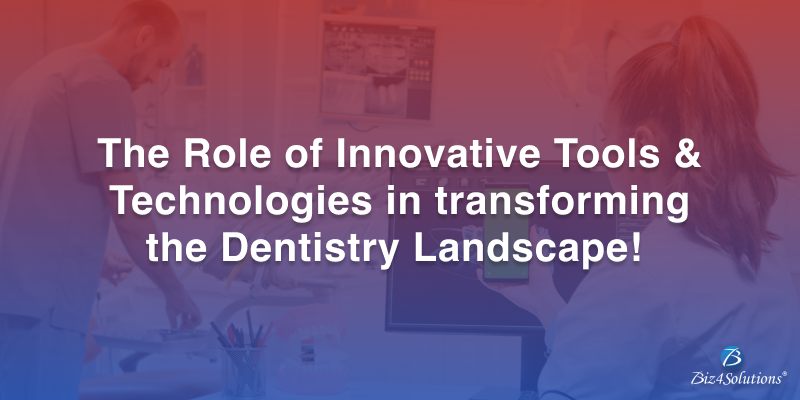
Imagine a scenario inside a dentist’s office where you are seated on a huge-sized chair and the dentist is examining your teeth using uncomfortable dental devices and instruments. Sounds scary, isn’t it? This kind of dreadful experience was a part and parcel of dental consultation until a few years ago. But, with time, things have changed. Thanks to innovative technologies in dentistry and advanced software tools, the patient experience underwent a significant transformation in the past couple of years.
The dentistry landscape has started leveraging the potential of emerging technologies to provide a more comfortable, satisfying, & hassle-free experience to patients. New-age dentistry tools & techniques also lead to more productive outcomes while saving time and effort for both dentists as well as patients. And, with more innovations expected down the line, the future of dentistry looks promising and all the more high-tech. This post explores the emerging technologies that play a pivotal role in revolutionizing dental methodologies and shaping the future of dentistry.
Significant Tools & Technologies transforming the Dentistry Landscape
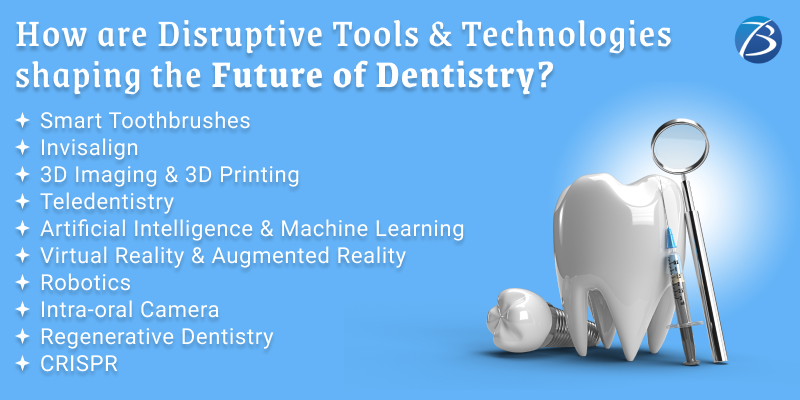
Smart Sensor-infused Toothbrushes
Smart home equipment has become trending these days. Did you know that there are smart toothbrushes as well? A smart toothbrush has sensors embedded in it which is a huge sigh of relief for individuals struggling to maintain dental hygiene. It ensures that its users follow the correct techniques while brushing their teeth and encourages them to stick to a routine for achieving the best possible outcomes. Hence, users can maintain an oral hygiene regime & minimize the chances of oral cavities or plaques.
The sensors are usually placed within the handles of the toothbrush. These sensors monitor users’ brushing habits & techniques and provide real-time feedback via the accompanying application. For instance, a smart toothbrush tracks whether users are applying excessive pressure while brushing their teeth. Moreover, such a toothbrush is immensely beneficial for kids as it teaches them the proper method of brushing their teeth. Also, certain smart toothbrushes provide gamification techniques to keep kids engaged and motivate them to clean their teeth regularly.
This is how a smart toothbrush works:
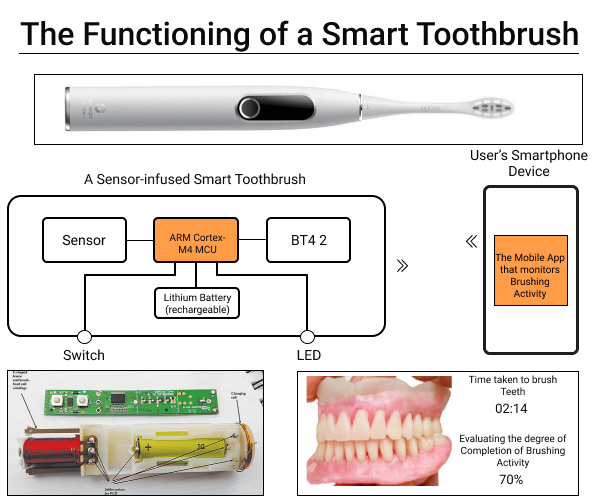
Invisalign
Gone are the days when patients have to deal with the hassles of heavy metal braces for straightening their smile. Metal braces provide an unpleasant look and are difficult to handle. The emergence of Invisalign braces has resolved such limitations. These are braces that are clear without any wires or brackets attached and are practically invisible. Unlike metal braces, Invisalign braces do not require the user to avoid certain types of food items. Invisalign braces are also more comfortable to wear, easier to clean & handle, and can be customized as per patient requirements.
3D Imaging
3D scanning is one of those technologies in dentistry that is gained a lot of traction in recent times. 3D imaging is fast replacing traditional X-rays as it successfully addresses all limitations existing in the X-ray procedure. Conventional X-rays capture 2D images, take longer to execute for capturing a detailed picture, and expose the patient to harmful radiation for a prolonged period. 3D imaging, on the other hand, captures 3D images of the teeth, mouth, & jaw in much lesser time and with more precision. Also, patients’ exposure to radiation is way lesser with digital imaging.
The 3D imaging technique is called CBCT (Dental Cone Beam Computed Tomography). This process offers clear visibility of the teeth’ structure and inherent issues. CBCT captures minute details such as the width & height of a tooth, the muscles around teeth, infections affecting soft tissues & nerve pathways, bone health, etc. Furthermore, the images captured can be rotated and can be viewed from any angle. Also, dentists can zoom in on problematic areas. This helps them to gain a better understanding of the dental issue and detect any early signs of dental problems before it worsens. This makes way for an improved and speedier decision-making process while planning for treatment & surgical procedures.
With the help of 3D images, doctors get detailed information about an individual’s tooth orientation, bone structure, jaw position, sinuses, & nerve canals. CBCT imaging proves highly effective in orthodontic treatments and cosmetic or restorative dental surgical procedures. CBCT eases the tasks of dental implants or placing bridges or crowns on your teeth. Besides, the 3D imaging technology is capable of detecting conditions like cancer, fractures, or cracks present in teeth that are likely to be missed by conventional imaging methodologies.
Computer-assisted Designing 3D Printing
The advent of 3D printing has upgraded the process of creating dentures. Earlier, patients had to visit the dentist’s clinic multiple times and wait for several days to get a pair of dentures produced and fitted. Dentists used to take the measurement and provide a temporary crown to the patient till the permanent one is going to be manufactured in a dental laboratory.
The advent of digital dentures has upgraded this process by generating precision-fitted dentures in minimal time. Advanced software & technologies like CAD (Computer-assisted design), CAM (Computer-assisted manufacturing), and 3D Printing are used for carrying out this process. Computers create a digital template out of the scans or pictures captured during a patient’s in-person visit to the dental clinic. These digital templates are sent to the milling machine for denture creation and the process is completed in just a few steps. This technique is also used for producing dental implants, dental splits to prevent tooth grinding, and other orthodontic appliances.
The 3D printing technology promises low cost and high speed, minimizing the overall expenses and elevating the patient experience at the same time.
Here’s an example of how the process of 3D printing works!
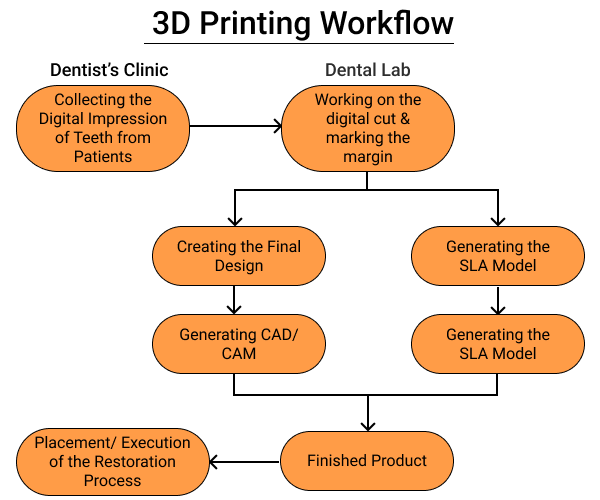
Tele-dentistry
Today, Tele-dentistry is one of the most popular technologies in dentistry. It has gained traction during the pandemic by offering remote care to patients.
Tele-dentistry expands access to care. It is a viable option for individuals who find it difficult to visit the dentist’s office due to mobility issues, disabilities, busy schedules, remote locations, etc. Tele-dentistry also facilitates inter-professional communications between healthcare staff. This technology allows patients to avail of live consultations from any location even if they do not have regular access to dentists.
Some of the key offerings of tele-dentistry include providing emergency dental care, prescribing instant pain relief medications, and monitoring treatment processes via teleconsultation or video conferencing. Tele-dentistry service enables dentists to schedule a virtual consultation, capture images of affected areas, and send the necessary information to local dentists. If some serious issue is identified the dentist will suggest an in-person visit to the local dentist for further examination.
Artificial Intelligence & Machine Learning
Artificial Intelligence & its subset Machine Learning has a lot to contribute to dentistry. These are innovative technologies in dentistry that minimize treatment time & expenses and rule out the chances of costly errors in diagnoses. AI creates a system that is intelligent enough to carry out tasks like evaluation, validation, prediction, & analysis based on the data available. In the dentistry landscape, AI/ML contributes to areas like orofacial pain diagnoses, orthodontia-related facial growth, radiographic interpretations, etc.
Dental scans and other crucial data generate loads of unstructured information that needs to be sorted by dentists. This is a time-consuming activity and chances of errors are likely. However, AI has simplified this task as it is capable of analysing big data in seconds without the need for human intervention. Billions of data points are used for training AI to make decisions as per the evidence available. This way, humongous data sets can be identified and filtered effortlessly.
AI/ML technologies are way more efficient than humans when it comes to identifying specific medical conditions. Neural networks interpret radiographs and help dentists easily find out and analyze periodontal diseases and tooth decay issues. When treating oral cancer, AI-based algorithms correctly analyze how many immune cells are present. This way, dentists can clearly understand the spread of cancer cells and predict the chances of recovery & the treatment methodology based on the intensity.
AI & ML identify the trends and patterns in the data generated & images captured; to assist with diagnosis as well as analysis of the dental issue. AI can also remove human errors during dental diagnoses. If ample data is available, AI & ML can even recommend therapies & treatment plans customized to the specific needs of every patient. And, if the right data is fed, AI/ML can predict dental problems well in advance before the issue aggravates.
VR (Virtual Reality)
Virtual Reality has already proved its potential in the gaming sector, offering a virtual immersive user experience. Now VR is being leveraged by other industries as well including dentistry. VR proves helpful to practicing dentists, trainees, dentistry students as well as patients.
VR-powered smart projectors or glasses generate 3D visuals; using these you can create a 3D model of a patient’s mouth or even head. Such 3D models can be used to effortlessly conduct mock experiments or treatment procedures for educating trainees without the need for any real patient to be present on the site.
VR models enable dentistry students to visualize and comprehend the structure of teeth along with their underlying foundation. Dentists can use a VR camera while performing operations. This will help them to stream the procedure globally and medical students can be a part of this experience virtually using VR goggles. This technique enables students to be a part of a virtual environment where they can witness dental procedures taking place; and that too from any location.
Dentists can also use VR models for explaining and providing clarity to patients about the planned treatment procedure. Patients will actually be able to visualize the upcoming treatment plan. A VR-induced virtual environment can also work wonders in resolving patients’ anxiety-related issues during an in-person visit to the dentist’s office. A VR headset can transport a patient seated on a dentist’s chair to a virtual world where they can visualize a calming landscape.
Augmented Reality (AR)
Augmented Reality involves virtually rendering a version of the real world using digital elements and devices that generate sensory stimuli. Here, real-world data is employed to offer a better understanding of the functionalities of driving apps in the real world. AR is a great alternative for dental mirrors and x-rays. Using dental mirrors, dentists can have only a limited glance at the problem areas. AR devices, on the other hand, provide a detailed overview of the dental issue. It comes in handy in offering patients a relaxed environment carrying out reconstructive aesthetic procedures. AR also contributes to recording dental treatment for educating trainees and students.
Robotics
Dentistry demands accuracy & precision within a confined space, and Robotics helps dentists to achieve this outcome. Robotics-empowered tools guide dentists during surgeries. Tasks like bone drilling or milling, osteotomy cuts, surgical planning, selection & positioning of plates, etc. are executed by robots. The robots are programmed interactively such that they execute the pre-programmed task during the surgery. Robotic tools prevent errors like over-drilling beyond pre-defined depths and drill deviation. These tools also make sure that critical anatomies like sinus cavities & nerves are safe during dental surgeries.
Dental nanorobots provide speedy and precise treatment procedures. They help in treating conditions like dentin hypersensitivity, cavity preparation, local anaesthesia, tooth repair & restoration, etc. The nanorobots also enable orthodontic realignment in a single visit.
Intra-oral Camera
With the advent of intra-oral cameras, patients no longer have to bear the discomfort of opening their mouths wide open for a long time during a dental examination at the dentist’s clinic. This technology has also improved the productivity & effectiveness of dental examinations conducted by dentists.
Earlier, with conventional tools, dentists had a hard time accessing certain areas of a patient’s mouth that were difficult to view or reach. And, this added to the discomfort of the patient as well. An intra-oral camera has successfully addressed this bottleneck. A dental mirror with a small-sized camera & built-in flashlight is put into the mouth of patients. The camera captures precise well-defined images of the patient’s teeth and surrounding areas that seemed impossible to reach with traditional dentistry tools. These images are instantly visible to the dentist on a big screen. As such, dentists are able to examine a patient’s teeth much more quickly and effectively than ever before. Patients too, enjoy a more comfortable and satisfying experience as they have to open their mouths just once for the camera to capture pictures. Furthermore, the pictures can be saved for future reference of the dentist and can also be used to provide patients with clearer visibility of their dental problems.
Regenerative Dentistry
Individuals with advanced dental problems often require treatments like root canals, dental implants, or dentures. But, with the advent of regenerative dentistry, you can say goodbye to all these conventional invasive treatment options.
Regenerative dentistry is a stem cell-based regeneration treatment methodology that enables the self-healing of damaged teeth. Here, specially-created dental fillings are used. These fillings stimulate stem cells for promoting the growth of dentin. And, dentin is the key component of our teeth enamel that generates new cells. As such, teeth can be regrown using the patient’s autologous stem cells. This is one of the most promising technologies in dentistry as it has the potential to replace natural teeth that have been damaged or lost. The cells will naturally restore the basic structure of damaged teeth as well as the periodontal tissues surrounding them. This technique also addresses the issue of tooth sensitivity by embedding cell layers within the teeth. Regenerative dentistry is in its formative stages & is expected to be implemented in the near future.
CRISPR
CRISPR, the acronym for Clustered Regularly Interspaced Short Palindromic Repeats, is a genome-editing technique and one of the most innovative technologies in dentistry. It is actually a programmable protein that is capable of turning off or turning on the genes. This revolutionary technology helps scientists in manipulating genetic code like human DNA.
Using CRISPR, dentists can identify as well as turn off the genes that cause oral cancer. This technique can also modify the functioning of plaque-causing bacteria by disrupting bacteria formation and preventing biofilm generation. This way, CRISPR can help in resolving two most-dreaded dental problems – tooth decay & periodontal disease.
In Conclusion:
These amazing technologies play a crucial role in transforming the future of dentistry. Dentists will be able to detect issues at the early stages and plan complicated surgeries with precision; ruling out the chances of any mistakes. The dental service providers will be able to offer patient care remotely. Patients would reap the benefits of less invasive dental treatment options and an unimaginable dentistry experience like never before.
Every dental practice should embrace a technological approach to stay relevant and competitive. It is advisable to partner with experienced healthcare app development services to tailor HIPAA compliant & futuristic dentist applications that will help your business to stay ahead of the competition.


